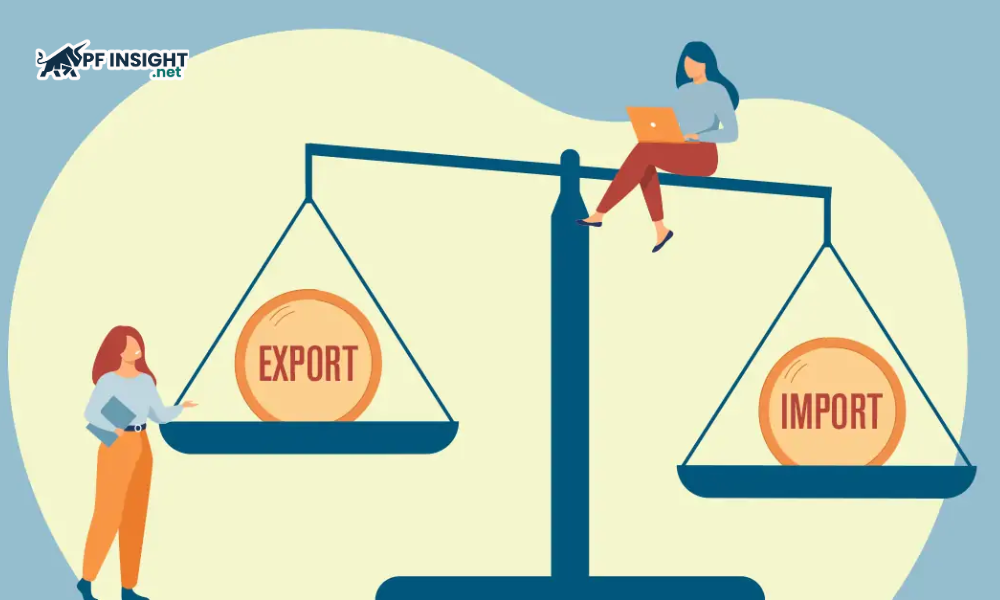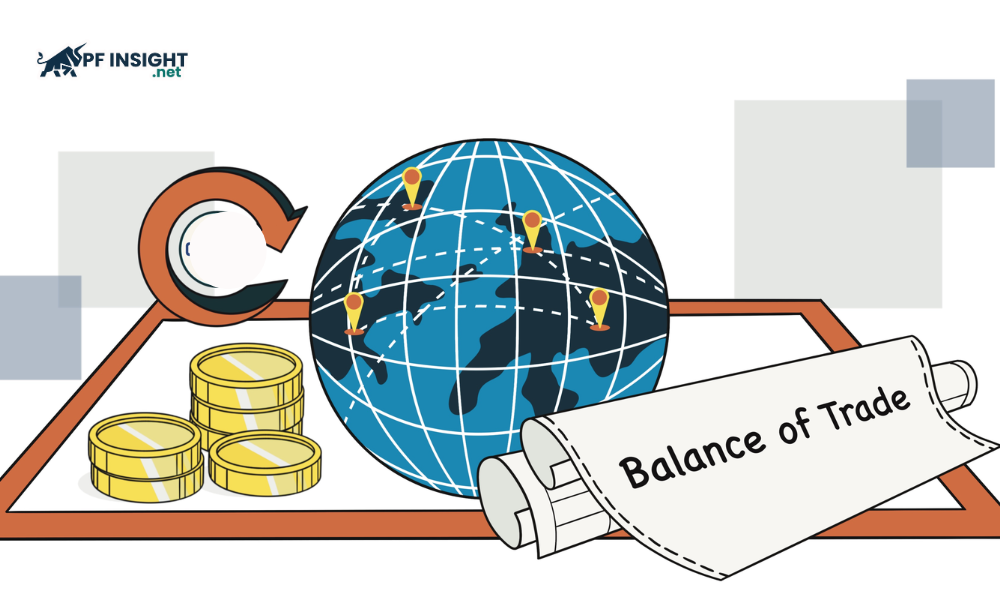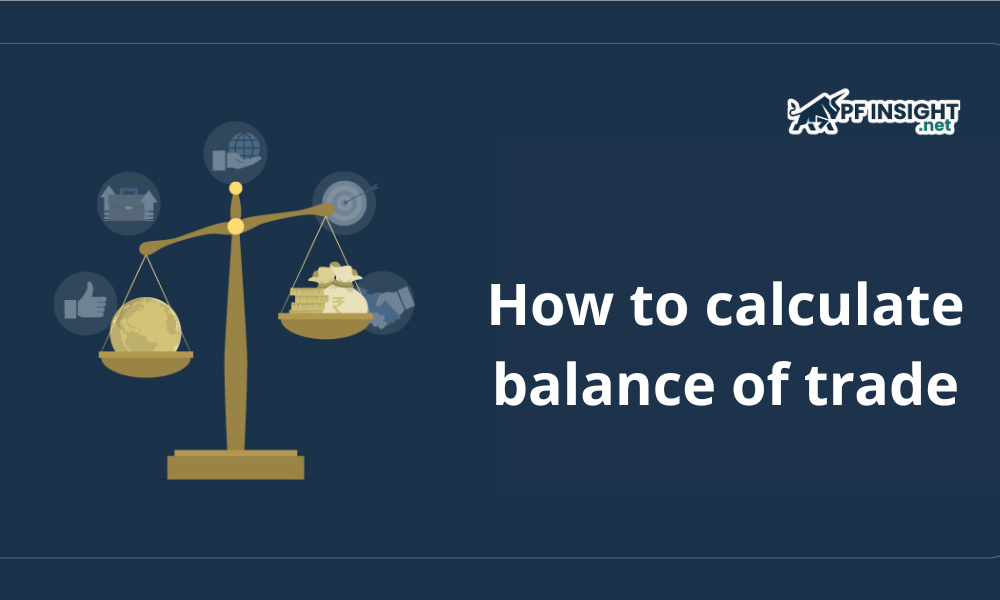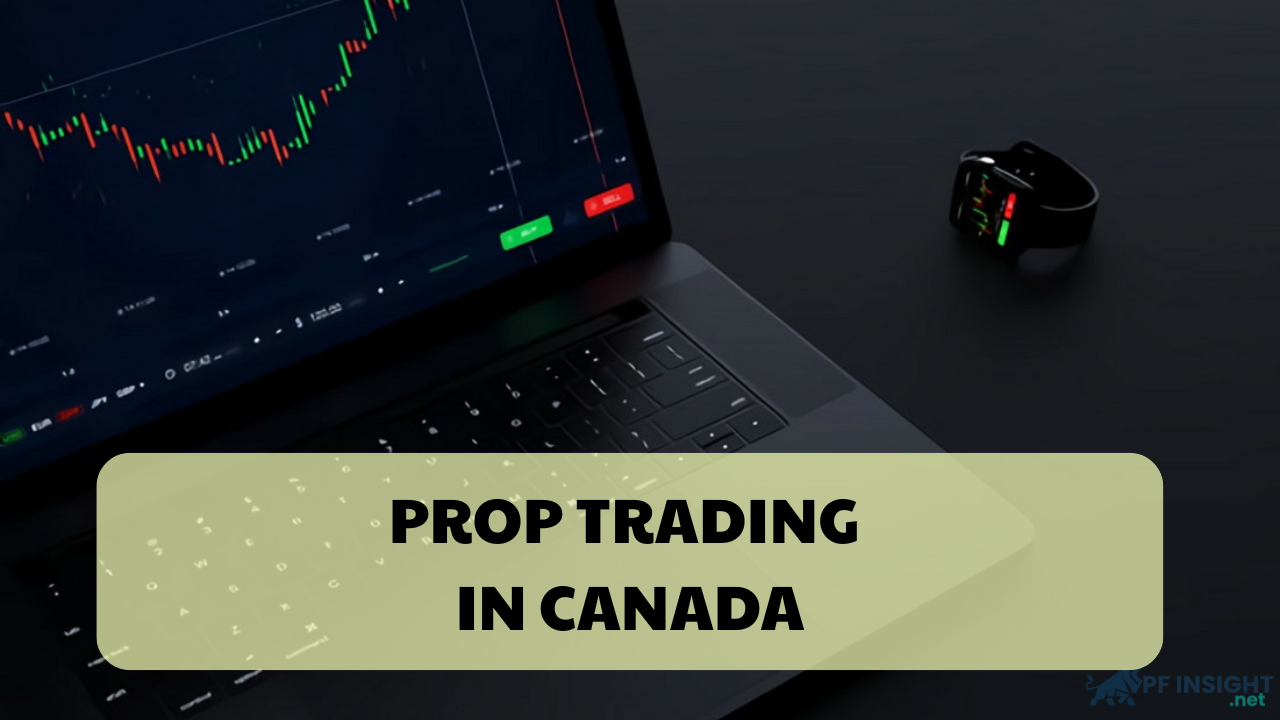The balance of trade is an indicator that measures the difference in value between a country’s exports and imports over a specific period. So how to calculate balance of trade correctly? Today’s article by PF Insight will explain what the balance of trade is and the significance of the trade balance in the economy.
- Understanding prop firm profit analytics for smarter trading
- What is Prop Firm tax? Tips funded traders use to keep more profits
- Top 10 prop trading in Canada for Forex, stocks and crypto traders
What is the balance of trade?
The balance of trade (BOT) reflects the difference between the value of a country’s exports and imports in a given period. This index is an important component of the Balance of Payments (BOP), which helps assess the economic relationship between that country and the world, thereby demonstrating its trade strength and international competitiveness.
When distinguishing between trade in goods and trade in services, the balance of trade (BOT) provides a more detailed picture of a country’s foreign economic activities. Understanding BOT helps assess the stability of the economy, while also reflecting the country’s competitive position and integration ability in the global trade context.
- Surplus: When a country has a positive trade balance, also known as a trade surplus, it shows that its goods are popular in the international market and are in high demand, reflecting strong competitiveness in the export sector.
- Deficit: When the trade balance is negative, also known as a deficit, it means that the value of imported goods exceeds the value of exported goods, reflecting that the country spends more on foreign goods than it earns from exports.
How does the trade balance affect economic health?

In today’s global economy, the trade balance plays a key role in reflecting the economic relationship between countries. It is an important indicator to help assess the level of integration, trade dependence and import-export strength of an economy. Here are the reasons why BOT is important:
- Measure of economic health: When a country has a positive trade balance, it shows that the value of its exports exceeds its imports, reflecting strong production capacity and competitiveness. Conversely, a negative trade balance shows that the country is importing more, reflecting its dependence on international markets.
- Impact on gross domestic product (GDP): The trade balance strongly impacts the growth of Gross Domestic Product (GDP) through the net export factor. When exports are greater than imports, the economy is boosted and GDP grows, conversely, a trade deficit can slow down the overall economic growth rate.
- Stabilizing the value of the domestic currency: The demand for the domestic currency from foreign partners will increase when a country has a trade surplus, which will increase the value of the currency. On the other hand, the domestic currency may weaken if the trade deficit continues, increasing the price of imports and putting pressure on inflation.
- National currency reserves: Countries that run trade surpluses tend to increase their national currency reserves, which helps to strengthen their financial foundation. These reserves play an important role in maintaining macroeconomic stability and effectively dealing with external fluctuations.
Trade balance classification
How to calculate balance of trade? The calculation is based on the difference between the total value of a country’s exports and imports. If the result is positive, the trade balance is considered favorable (surplus), and if negative, it is unfavorable (deficit).

Positive trade balance
Many countries aim to achieve trade surpluses through policies that promote exports. They hope that selling more goods will bring in abundant foreign exchange, improve the lives of their people and enhance the competitiveness of domestic enterprises. In some cases, this benefit has positive effects in the short term.
However, many countries choose trade protectionism to maintain export surpluses. They apply measures such as increasing import tariffs, controlling prices or providing financial support to domestic enterprises, with the aim of protecting domestic production from competition in international markets.
Many affected countries often respond with trade defense measures such as retaliatory tariffs or restrictive regulations. These moves can easily escalate into trade tensions, raising the cost of goods, hindering international trade and ultimately harming the world economy.
Negative trade balance
A negative trade balance is generally considered unfavorable, especially for countries whose economic structures rely heavily on the export of raw materials, as it indicates an imbalance in trade and potential economic risks.
In general, these countries tend to import large volumes of goods and services from abroad. This leaves domestic industries without the capacity to develop and produce high-value products. As a result, the economy becomes vulnerable to fluctuations in global prices.
Some countries react so strongly to trade deficits that they pursue mercantilist policies – an extreme form of economic nationalism in which they attempt to achieve and protect trade surpluses by any means, including through intervention or restrictions on international trade.
Mercantilism encourages the adoption of protectionist policies such as raising import tariffs, restricting foreign goods and subsidizing domestic businesses. However, these measures often provoke retaliation from other countries, increasing trade costs, reducing the global flow of goods and slowing economic growth.
How to calculate balance of trade
To calculate balance of trade most accurately, you can apply the following formula:
Balance of Trade (BOT) = Exports − Imports
- Exports: Exports reflect the total monetary value of all goods and services sold to international markets by domestic businesses and organizations.
- Imports: Imports indicate the total monetary value of all goods and services purchased from other countries for domestic consumption or production.
However, to better understand how to calculate balance of trade, we can consider the following example of how to calculate the balance of trade:
Suppose in 2025, country A exports goods and services worth 250 million USD, while the total import value is 200 million USD. Then, the trade balance is calculated as follows:
BOT = 250 million USD – 200 million USD = 50 million USD
=>> A positive result shows that country A has a trade surplus, meaning it exports more than it imports.
What factors affect the trade balance?
In fact, there are many different influencing factors, of which the three most important factors that have the strongest impact on the trade balance are as follows:

Inflationary
Inflation is a macroeconomic factor that has a strong impact on the trade balance. When the inflation rate is high, the price of domestic goods increases, reducing the competitiveness of export products. At the same time, consumers tend to switch to cheaper imported goods, which can increase the trade deficit.
Foreign exchange rates
Exchange rates reflect the relative value between domestic currency and other foreign currencies in the international market. Exchange rate fluctuations can significantly impact the trade balance, directly affecting the ability to export, import as well as the competitiveness of domestic goods compared to the global market.
- When the domestic currency appreciates, imports become cheaper while exports become expensive in the international market.
- Conversely, when the domestic currency depreciates, import costs increase but export goods become more competitive, helping to promote exports abroad.
International trade policy
Government economic and trade policies play an important role in shaping a country’s trade balance. When the government adopts support or control measures in a sector, the prices and competitiveness of goods are affected. For example, subsidies for the agricultural sector can help reduce production costs, promote exports and improve the trade balance.
Many countries use tariff policy as a tool to adjust the trade balance. However, applying import tariffs that are too high can be counterproductive, reducing the circulation of goods and causing trade imbalances. These barriers not only limit free trade but also make it difficult for the country to export, seriously affecting economic growth.
Which agency is responsible for publishing the trade balance report?

Information on the trade balance is usually published periodically by central statistical agencies or government organizations that manage economic data. These agencies are responsible for collecting, analyzing, and publishing official data related to import and export activities. Here are some specific examples from each country:
- United States: This report is produced by the U.S. Census Bureau in conjunction with the Bureau of Economic Analysis (of the U.S. Department of Commerce). It is part of the monthly report on U.S. international trade in goods and services.
- European Union: The report is compiled and published by Eurostat, the official statistical office of the European Union. Member states also submit their own trade figures through their national statistical offices to ensure accuracy and consistency across the bloc.
- UK: This report, published by the Office for National Statistics (ONS), provides detailed monthly and quarterly data on the trade balance. These figures are incorporated into economic reports to reflect the country’s trade and economic performance.
- Canada: This report, published by Statistics Canada and titled the International Merchandise Trade Report, provides detailed information on the country’s imports, exports, and trade trends.
- Australia: This balance of trade report is published by the Australian Bureau of Statistics as part of a monthly data set on international trade in goods and services, reflecting the import and export activities of the Australian economy.
- India: This report is published by the Ministry of Commerce and Industry of India in collaboration with the Reserve Bank of India (RBI) to provide data related to the country’s balance of payments and international trade activities, to support macroeconomic policy making.
- China: This report, released by the General Administration of Customs of China, provides monthly trade data. These figures are of particular interest to the global economic community, given China’s crucial role in international trade and supply chains.
- Japan: This balance of trade is published by the Japanese Ministry of Finance and provides detailed information on trade and balance of payments. The Bank of Japan also monitors and analyzes these figures to support monetary and macroeconomic policymaking.
When do the agencies release trade balance figures?

Trade balance reports are usually released monthly, usually 1 to 4 weeks after the relevant month ends, providing timely data and accurately reflecting the import and export situation.
For example, in countries such as the US, UK, Australia, Canada and Japan, trade balance reports are typically released in the first or second week of the month following the month being reported.
The US trade balance report is published by the Bureau of Economic Analysis and the Census Bureau, while Eurostat data for EU member states is typically released later, about six weeks after the end of the reporting month.
In India, the Ministry of Commerce and Industry releases trade balance data monthly, usually three to four weeks after the month ends. In contrast, in China, the figures are usually released in the first week of the following month through the General Administration of Customs, providing a timely reflection of international trade.
Each country has its own schedule for releasing its trade balance report, but the figures are typically released shortly after the reporting month ends. This helps provide timely information that accurately reflects import and export activities and helps analysts make economic decisions.
Conclude
The balance of trade is an important measure that records all the goods and services exchanges of a country with the world. Understanding how to calculate balance of trade helps to accurately assess the health of the economy and helps policymakers and investors make smarter and more strategic decisions.







